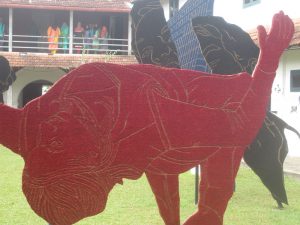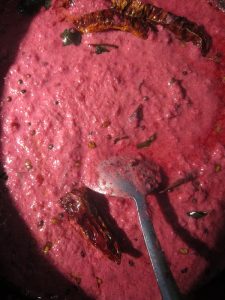 Excuse my long absence. I have been needing to devote the little wifi we get on the ship to class prep, as we are in Africa, little known territory for me and little depth in terms of images. So, I am needing to do lots of online searches for examples of San rock art, anti-apartheid resistance art, Ga fantasy coffins, Ghanaian brass weights for measuring gold, and kente cloth.
Excuse my long absence. I have been needing to devote the little wifi we get on the ship to class prep, as we are in Africa, little known territory for me and little depth in terms of images. So, I am needing to do lots of online searches for examples of San rock art, anti-apartheid resistance art, Ga fantasy coffins, Ghanaian brass weights for measuring gold, and kente cloth.
In India, Blake and I stayed close to the ship, docked in Kochi, a beautiful city in Kerala State, on the Arabian Sea. We spent most of our time in Fort Kochi, the historical part of town. For an art historian, this was a perfect port to stay local, as the biennale had enveloped the city. This biennial was organized in 2010 by the Ministry of Culture of Kerala State to provide locals more exposure to contemporary art and another venue for contemporary Indian artists to introduce their work; the first was held in 2012-13.
Art flooded clothing shops and warehouses, cafes and hotels. There were many installations by artists from all over the world. Many focused on Kochi in particular, the result of residencies offered by the Kerala government. One artist did a photographic essay on the contrasts between old rusty Kochi and the new gleaming city. Another contemplated the shipping industry. There were also displays dedicated to specific topics, like women’s labor, in every sense of the word.
Blake and I also caught a performance of Kathakali, a tradition theatrical practice in southwestern India. Sumptuous makeup and well-timed shrieking made us feel as if we were indeed witnessing the day in the life of a Hindu deity, having to fight off the sexual advances of an all-too-devoted human.
Finally, in case I don’t get to it soon enough on my Food page, the food, like the theater, was divine: intricately flavored curries (one beet curry—heaven!), crunchy lentil sambal, and gulab jamun, made with rose water that was clearly made in Paradise.






Leave a Reply